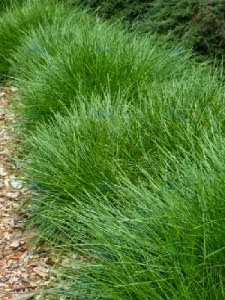As we have a tendency to all apprehend the recognition of Lomandra’s as mass plantings within the landscape has multiplied considerably over the previous couple of years. many folks assume and visit Lomandra’s as native grasses however technically they're not in botanic terms. Lomandra don't seem to be true grasses like liliopsid genus or Themeda however rather grass like plants or strap leaf plants happiness to the Grass tree family Xanthorrhoeaceae.
The most unremarkably used, sturdy and stronger Lomandra species for general mass landscaping area unit the longifolia and hystrix sorts. Common Lomandra longifolia could be a terribly dry tolerant plant and can additionally tolerate cold and frost well. It may be quite variable and can naturally occur in sandy soils or free exhausting heavier soils. Some plants originating in these soil conditions will handle each conditions and there area unit choices accessible that have established they'll grow with success in each soil sorts like Lomandra sorts as well as Tanika and Katrinus Deluxe.
The main drawback in Qld and middle to northern Naval Special Warfare for longifolia choices may be wet feet and poor drain let alone summer rain and high humidness. Avoid these things if you're victimization longifolia sorts as they'll tend to disappear and decay faraway from the bottom of the plant through summer. On the opposite hand Lomandra hystrix sorts will higher handle wet soils and humidness. they {will|they'll} additionally tolerate dry conditions however will perform higher with some summer watering once it's dry. Lomandra hystrix varieties like Tropicbelle and Katie Belles have male flowers in order that they don't manufacture any seed and therefore the flowers have a powerful scented fragrance that fills the air in middle to late spring. Lomandra fluviatilis is additionally another species to contemplate for general mass planting. it's a troublesome plant that copes alright in wet conditions and additionally can tolerate serious frosts, look out for one named Shara.
 |
| Lomandra fluvitalis |
Other common Lomandra species that are utilized in general mass landscaping and don't perform furthermore or area unit higher suited as garden plants area unit the confertifolia and filiformis sorts. These species compared to longifolia and hystrix species take longer to determine once planted and sometimes die thanks to lack of water in institution. they have a tendency to induce outcompeted by weeds quickly thanks to their slower rate and confertifolia’s specially don't handle dry conditions furthermore thanks to their less vigorous scheme. the simplest place to use Lomandra confertilfolia varieties like Seascape, Tilga or little Con or filiformis varieties like grassland Blue or territory Blue is in gardens, wherever they'll be maintained, and weeds may be removed. utilized in mass plantings, they're a lot of liable to being overtaken by weeds. If these species sorts area unit used, the tiniest size to use could be a 140mm pot, however thanks to the slowness of multinational a minimum size of 175mm would be higher.
 |
| Lomandra filiformis |
Some of the new blue foliage sorts look pretty, however they'll die quite simply once the days get robust. they're sensible garden plants, however avoid them for mass planting. a part of the rationale why they are doing not perform furthermore because the a lot of vigorous Lomandra species in sunny mass planted areas, may be sourced from the biology text books. All the Lomandra confertifolia species represented grow in dry sclerophyll forest with some shade, apart from one kind that grows in rocky arenaceous rock kind soils. this can be most likely the rationale why most fail in wet kind climates, furthermore as dry climates wherever it's full sun and serious soil sorts.
One factor to be aware of after you area unit specifying or victimization Lomandra varieties for mass plantings/roadsides is to create certain you recognize what species you're victimization. several new varieties on the market don't specify what species they're, therefore do your analysis before victimization some Lomandra’s because it might not be the appropriate species you supposed for that space.




